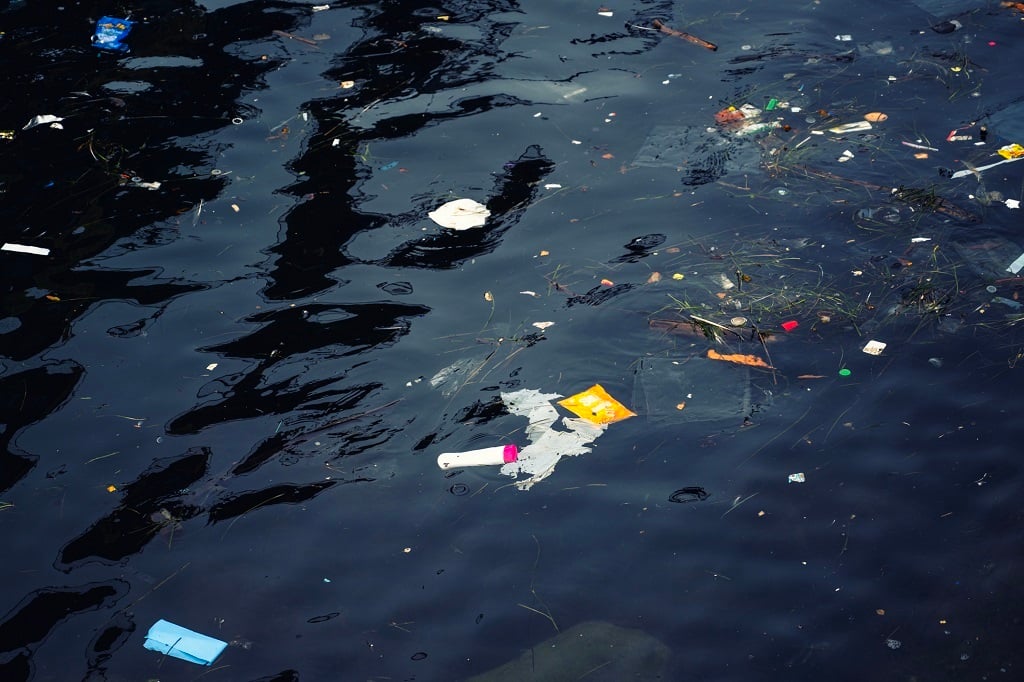
Microplastics contaminate seafood. (Carmen Martinez Tron/Getty Images).
- The fourth round of negotiations for a global agreement to end plastic pollution concluded this week.
- At issue in the negotiations was whether to limit plastic production. Most plastics are made from fossil fuels and polluting chemicals.
- Even wet wipes and some biodegradable plastics leach harmful microplastics into the environment after they are disposed of.
- For climate change news and analysis, visit: News24 The future of climate.
This week, the Intergovernmental Negotiating Committee on Plastic Pollution concluded the fourth round of treaty negotiations in Ottawa, Canada. The main issue between negotiators from 175 countries is whether to limit plastic production. Most plastics are made from fossil fuels and chemicals and do not fully or easily biodegrade, causing pollution after use.
Despite several rounds of consultation, the widespread plastic problem remains unresolved. The final meeting is scheduled to be held in South Korea at the end of this year.
Amid a global fight to curb plastic pollution, the UK last month announced it would introduce legislation to ban wet wipes containing plastic. Wet wipes made from plastic are known to leach harmful microplastics into the environment after they are discarded.
We all know that plastic bags have a negative impact on the environment, but other everyday items, also known as “invisible plastics,” may unexpectedly contain plastic or harmful “microplastics.” Is there a solution?
What is invisible plastic, “microplastic”?
These are items that at first glance don't seem to be made of plastic (such as wet wipes), but once discarded, they release plastic into the environment.
“Invisible plastics are everywhere,” says Tony Walker, a professor in the School of Resources and Environment at Dalhousie University in Canada and member of the Scientists Union for an Effective Plastics Treaty.
“When it comes to global plastic production, the table I'm sitting on, the chair I'm sitting on, my computer, everything can potentially contain plastic.”
He said there is no need to eliminate all plastics, especially if they are used to make furniture that will last for decades.
Read | Plastic pollution talks move closer to world's first agreement
The focus should be on single-use items, including plastics, he added. He said these were adding to the “massive amounts of plastic sitting in landfills” and often leaching harmful microplastics into the environment.
Microplastics are tiny particles of plastic that can even find their way into our food, for example, when they enter the ocean and are first broken down and ingested by fish. Walker added that so-called “biodegradable plastics”, which are advertised as being able to decompose naturally when thrown away, can also contain microplastics.
What unexpected items may contain plastic?
Other everyday items that surprisingly contain plastic include:
- chewing gum: The key ingredient used in the manufacture of chewing gum, the “gum base”, actually contains polyvinyl acetate, a plastic that does not biodegrade once the gum is disposed of.
- tea bag: Most tea bags are lined with a plastic called polypropylene to maintain their shape when placed in boiling water. The same applies to many coffee filters.
- Sunscreen: Some brands of sunscreen use microplastics as an ingredient in their formulation.
- Aluminum cans: Many aluminum cans containing soda have a plastic lining to prevent the acid from the soda from reacting with the metal of the can.
- receipt: Most paper receipts cannot be recycled because many receipts are printed on thermal paper, which is coated with a layer of plastic to give it a glossy finish.
- Toiletries and laundry supplies: Some toothpaste brands contain small plastic beads or microbeads that act as exfoliants. They do not break down or dissolve in water. Microbeads are also found in facial scrubs, makeup products, and laundry detergent powder.
What are countries doing about this issue?
During the United Nations Environment Assembly session in March 2022, a landmark resolution was adopted to draft a legally binding international treaty on plastic pollution.
Based on this resolution, the Intergovernmental Negotiating Committee (INC), which includes representatives from 175 countries, is continuing discussions with the aim of drafting a treaty by the end of this year. Previous meetings have been held in Uruguay, France and Kenya. The fourth session concludes this week in Canada, and the final session will be held in South Korea from November to December.
This time, a major difference of opinion has arisen around the world on limiting the amount of plastic produced.
Environmental experts say it is important to reach a consensus on the issue. Plastic production continues to increase around the world, with the Organization for Economic Co-operation and Development (OECD) predicting that annual production of fossil fuel-based plastics will triple by 2060 if nothing changes.
Graham Forbes, Greenpeace representative in Ottawa, said it is impossible to eliminate plastic pollution without drastically reducing plastic production.
“Current world production [of plastic] over 400 million tons [tonnes] “But we only recycle 9% on average globally,” Walker said. This leaves 91% of the 400 million tons as waste. ”
Read | Decontamination could mean Paris could open its first urban beach along the Seine as early as next year
Why don't some countries want to reduce plastic production?
Experts say this is mainly due to economic factors.
“Some people have a strong interest in producing plastic products and petroleum products,” Walker explained. These countries believe that halting plastic production would have a negative impact on their economies, he added.
Will the government be able to find a solution?
Experts are calling on INC representatives to redouble their efforts to reach an agreement on plastic production by the end of this year.
Walker pointed out that plastic is a transboundary pollutant that crosses rivers and borders, meaning countries should have a vested interest in tackling the problem. “Plastic is now in the atmosphere, in the air we breathe, and it's actually moving between continents in air currents,” Walker said.

